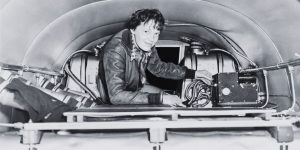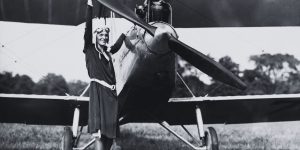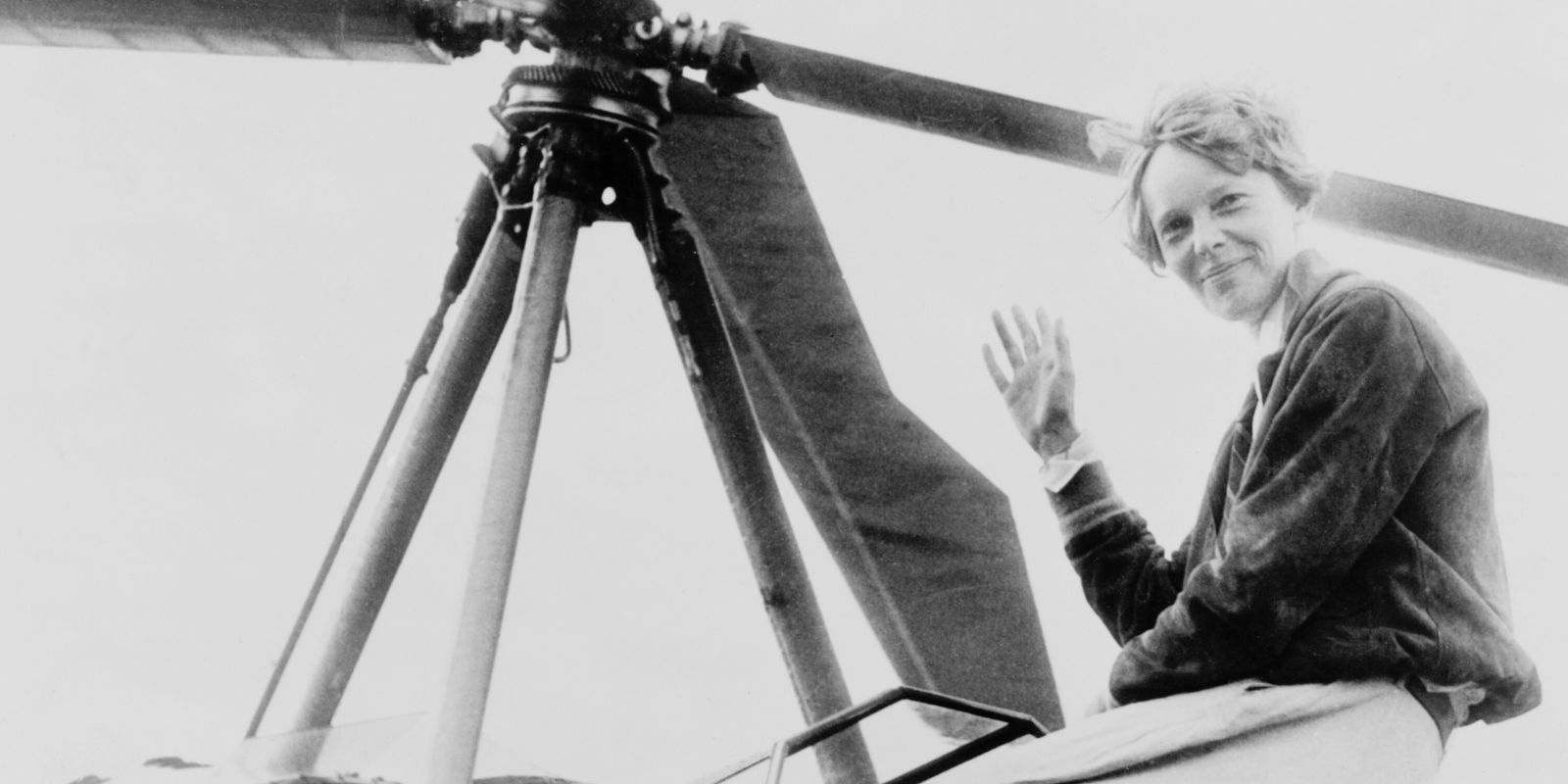What Happened On May 21st?
On May 21, 1932, Amelia Earhart made history by becoming the first woman to fly solo nonstop across the Atlantic Ocean. Taking off from Harbour Grace, Newfoundland, on May 20, she navigated through challenging weather and mechanical issues.
After 14 hours and 56 minutes in the air, she successfully landed in a pasture at Culmore, near Londonderry, Northern Ireland. Her achievement not only showcased her exceptional piloting skills but also broke barriers in aviation and gender norms of the time.
The Departure
Earhart took off from Harbour Grace, Newfoundland, in her bright red Lockheed Vega 5B. Unlike Charles Lindbergh, who had made his transatlantic flight exactly five years earlier, Earhart faced additional obstacles, including mechanical issues and adverse weather conditions.
Her plane was equipped with more advanced navigation instruments than Lindbergh’s Spirit of St. Louis, but she still relied heavily on her own skills and intuition to navigate the vast expanse of the Atlantic Ocean.
A fascinating detail about Earhart’s flight is that she carried a thermos of hot chocolate to help keep her warm and alert during the journey. Additionally, she wore a leather flying suit and a leather helmet, similar to the gear worn by World War I pilots, to protect herself from the frigid temperatures at high altitudes.

Earhart also had a compact, custom-made barometer and altimeter, which she meticulously monitored throughout the flight to ensure her altitude and pressure remained within safe limits.
The Flight Was Not Easy
Earhart’s journey was beset with numerous challenges from the outset. Strong northerly winds, icy conditions, and mechanical problems plagued her flight. Shortly after takeoff, she encountered fierce headwinds and turbulence, which slowed her progress. Also, her altimeter malfunctioned, forcing her to rely on her instincts and dead reckoning to maintain her course. Unlike Lindbergh, who flew at relatively low altitudes to avoid icing, Earhart had to contend with both ice and thunderstorms, making her journey even more perilous.
At one point, a sudden storm forced Earhart to descend to just a few hundred feet above the waves to avoid the worst of the weather. This dangerous maneuver put her dangerously close to the ocean’s surface.
Despite these harrowing conditions, Earhart pressed on. Earhart’s resilience was further tested when an exhaust manifold cracked, causing the cabin to fill with smoke. With quick thinking, she managed to ventilate the cockpit and continue the flight,
The Day She Broke Records
After a difficult journey, Earhart safely landed in a pasture at Culmore, near Londonderry, Northern Ireland, on May 21, 1932. She was greeted by a startled farmer who asked, “Have you flown far?” to which she famously replied, “From America.” At this point, she had just become the first woman to fly solo across the Atlantic.
The landing site in Ireland quickly became a place of interest. Locals commemorated her arrival by placing a marker at the exact spot where she touched down. Earhart’s arrival was also unexpected as she initially planned to land in Paris, but adverse weather conditions forced her to change course. This adaptability highlighted her exceptional navigational skills.

Earhart v.s. Lindbergh
While both Earhart and Lindbergh achieved extraordinary feats by flying solo across the Atlantic, their journeys incorporated different challenges and circumstances. Lindbergh’s 1927 flight from New York to Paris was longer, covering about 3,600 miles and taking 33.5 hours. In contrast, Earhart’s route from Newfoundland to Ireland was shorter, approximately 2,000 miles, and took nearly 15 hours.
However, Earhart’s flight was no less remarkable; she faced more severe weather conditions and mechanical issues that tested her resilience and piloting expertise.
Additionally, Earhart’s flight showed off new advancements in aviation technology that were developed after Lindbergh’s journey. Her aircraft, the Lockheed Vega 5B, was one of the most advanced planes of its time, featuring a powerful engine and improved aerodynamics. Despite these improvements, Earhart’s flight was still fraught with danger.
What Happened After
Amelia Earhart’s solo transatlantic flight inspired countless women to pursue careers in fields previously dominated by men. Earhart continued to break records and push boundaries until her mysterious disappearance in 1937 during an attempt to circumnavigate the globe. Her Lockheed Vega 5B, the aircraft that carried her across the Atlantic, is now preserved at the Smithsonian National Air and Space Museum in Washington, D.C.
In addition to her aviation accomplishments, Earhart was a dedicated advocate for women’s rights. She was a founding member of The Ninety-Nines, an international organization of female pilots aimed at providing mutual support and advancing the cause of women in aviation. Her speeches and writings consistently encouraged women to pursue their dreams and challenge societal expectations.





